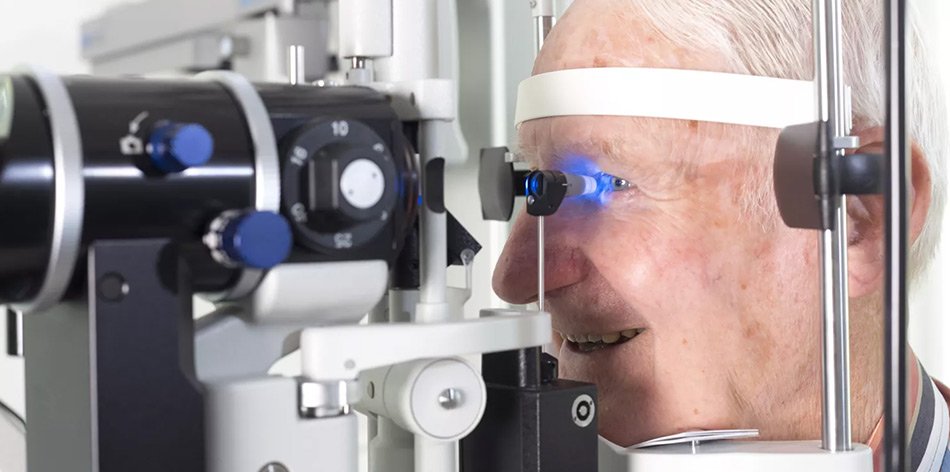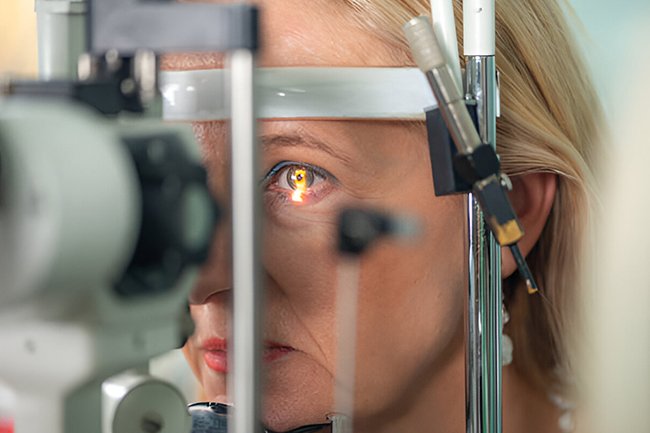Glucoma Screening and Treatment in Faridabad
- Home
- Our Services
- Glaucoma Evaluation and Treatment
The world is worth seeing
Our Services
Book Appointment
Our Location
C-38, upper ground floor, Hansraj Gupta Rd, Greater Kailash-1, C Block, New Delhi, 110048
Quick Contact
Call Us: +91-9971385090
Email:info@eyeroots.com
Opening Hours
Monday - Friday
09:00 Am- 06:00 PM
Glaucoma: What you need to know about this eye disease
A group of eye diseases known as Glaucoma affects the optic nerve, which is essential for transmitting visual data from the eye to the brain. Vision loss or even blindness may follow from this problem. Often referred to as “Kala Motia,” Eye Glaucoma evaluation test usually arises from excessive eye pressure but can arise with normal or even lower-than-normal eye pressure. Glaucoma treatment costs can vary, depend on medication, treatments, or surgery.

Who is at risk for Glaucoma?
Family History : You are more likely if glaucoma runs in your family—particularly among close relatives.
Eye Injury : Glaucoma can strike right away or years after an eye injury.
Age : Glaucoma is more likely to develop in those over forty.
Long-term steroid use for ailments such as skin disorders, arthritis, or asthma raises the risk.
Additional risk factors : High myopia (nearsightedness), hypermetropia (farsightedness), hypertension, and diabetes. In those with diabetes, variable blood pressure, or myopia, glaucoma damage can be more severe.
Why is Regular Eye Checkup Important for Glaucoma?
Glaucoma, often called “the silent thief of vision,” usually develops without any symptoms until serious vision loss occurs. Common in an older person, cataract makes it difficult to tell whether vision loss is from Glaucoma or cataracts. That’s why regular eye exams after age 40 are very important to catch and treat both conditions early.
Younger people, particularly those having a family history of Eye Glaucoma, may develop symptoms later or go undetectable until major peripheral vision loss occurs. Early diagnosis and treatment depend on regular eye examinations and specific tests.
Symptoms of Glaucoma: How can I tell I have Glaucoma

Primary Open Angle Glaucoma:
- It can be asymptomatic or may not be noticed
- Mild heaviness of eyes, eye ache, headache in the evening
- Inability to adjust vision on entering a dark room
- Frequent change of reading glasses
- Loss of vision, if not treated- first peripheral or side vision, then central vision
Acute angle closure glaucoma: It is a medical emergency
- Coloured halos around a bulb may be noticed initially
- Sudden severe pain in the eye
- Unilateral Headache
- Blurred Vision
- Redness in eye
- Nausea or vomiting

Normal-Tension Glaucoma : Damage to the optic nerve happens even at normal eye pressure.
Secondary Glaucoma : Results from an eye injury or other diseases or drugs influencing optic nerve or eye pressure.
How often should I get my eyes examined for Glaucoma?
Even without symptoms, you should undergo a Glaucoma eye exam every 3 to 4 years after 40.
Get checked every 1-2 years if there is a family history of Glaucoma, diabetes, long-term steroid usage, or an eye injury.
If you have already been diagnosed with Glaucoma, frequent follow-ups are required; the frequency will vary depending on the degree of severity and treatment response.
Young Children and Newborns: Children with exceptionally big or clouded eyes or light sensitivity should be checked for congenital Glaucoma. Children should get a routine eye checkup at age 3–4 years before beginning school, even without symptoms.
How is Glaucoma Diagnosed?
Vision testing looks for peripheral vision loss, As central vision in glaucoma is not affected till the later stages
Tonometry tests eye pressure to ascertain if it is under control with medication or high.
Ophthalmoscopy: dilated eye examination for retina and optic nerve evaluation.
Gonioscopy evaluates drainage channels (if open angle glaucoma or closed angle glaucoma)
Examining visual fields finds flaws in both central and peripheral vision.
To identify early glaucoma, advanced imaging techniques, including GDxVCC, HRT, and OCT gauge the thickness of the nerve fiber layer.
Pachymetry to evaluate thickness of cornea.
How is Glaucoma Treated?
As glaucoma damage cannot be reversed, treatment aims at reducing eye pressure so that further damage to the optic nerve is prevented. The major approaches of eye glaucoma evaluation and treatment cost consist of:
Medical treatment :lowers eye pressure with pills and eye drops. While some drugs boost fluid evacuation, others cause the eye to produce less. Even in cases when symptoms are absent, consistent use, as advised by your ophthalmologist, is absolutely vital.
- YAG Laser Peripheral Iridotomy opens a fresh drainage channel
- Selective laser trabeculoplasty enhances fluid drainage
- Argon laser trabeculoplasty improves the drainage mechanism
Glaucoma Filtering Surgery : A new drainage channel created by glaucoma filtering surgery helps to circumvent clogged drainage sites, hence lowering eye pressure. Usually, this is taken into consideration for patients who cannot follow their medications or for other therapies failing.
What can I do to prevent glaucoma?
Although glaucoma by itself cannot be stopped, early identification and eye glaucoma evaluation and treatment can help to avoid major damage. Since these are the best approaches to identifying glaucoma early on, regular eye exams are quite vital. Although constant research seeks to pinpoint risk factors and forecast glaucoma development, keeping regular eye checkups is the most successful approach right now.
Following these rules and keeping alert with eye health will help you control your risk and keep good eyesight.
Consult the Eyeroots Eye Clinic for expert glaucoma advice and treatment
See us at Eyeroots eye clinic in Faridabad right now if you have questions about eye glaucoma evaluation test and glaucoma treatment cost or another eye condition. To help preserve your eyesight, our knowledgeable ophthalmologists offer thorough eye exams, precise diagnosis, and individualized treatment strategies. Don’t wait until symptoms are severe; act proactively to preserve your eye health. Please make an appointment by contacting 9871220335 Eyeroots eye clinic now to guarantee your eyes get the professional treatment they deserve.
